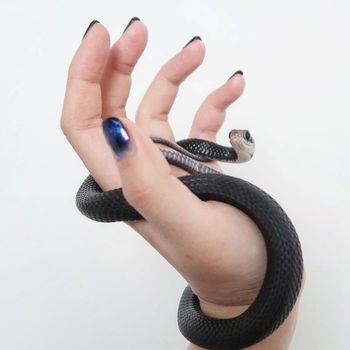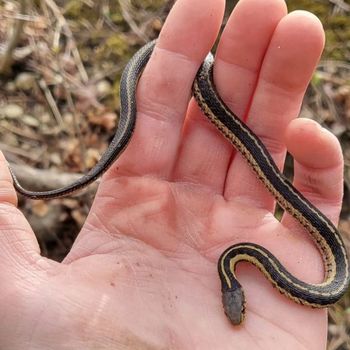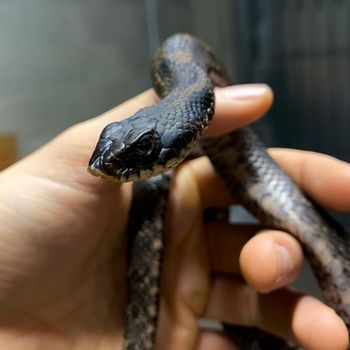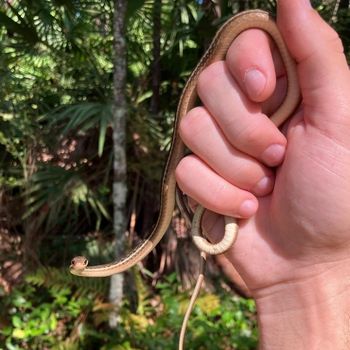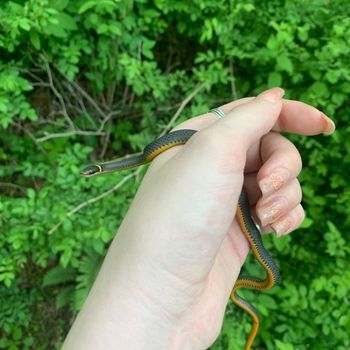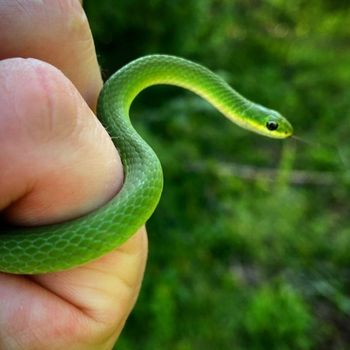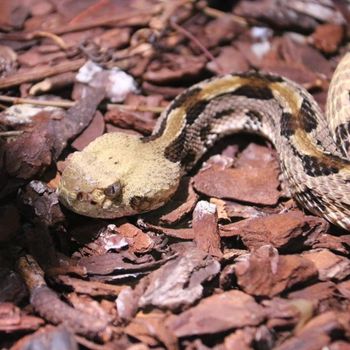Snakes in Massachusetts: Bay State Reptiles
Did you know that Massachusetts is home to quite an impressive variety of slithery creatures? That’s right — you can find a whopping 14 different snake species in this lovely state.
Now, before you get all freaked out, let me assure you that most of the snakes you’ll encounter here are completely harmless. However, it’s still good to know what’s out there, right?
So, whether you’re a seasoned herpetologist or just someone with a curiosity for our legless friends, read on to discover the fascinating snakes that call Massachusetts their home.
| # | Name | Details | Image |
| 1 | Black Racer (Coluber constrictor constrictor) |
| 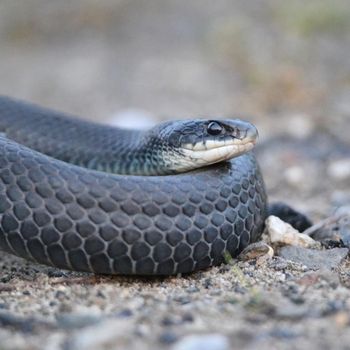 |
| 2 | Black Rat Snake (Pantherophis obsoletus) |
| 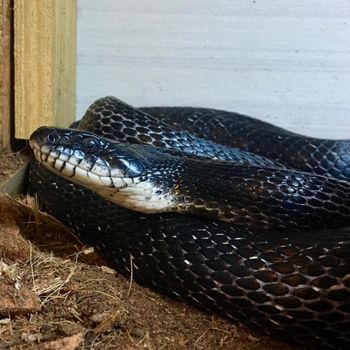 |
| 3 | Copperhead (Agkistrodon contortrix) |
| 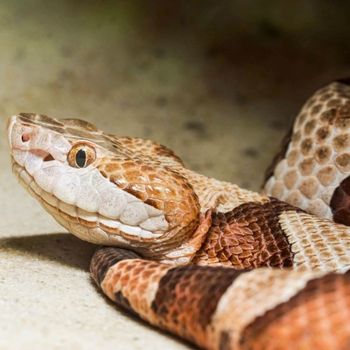 |
| 4 | Dekay’s Brownsnake (Storeria dekayi) |
| 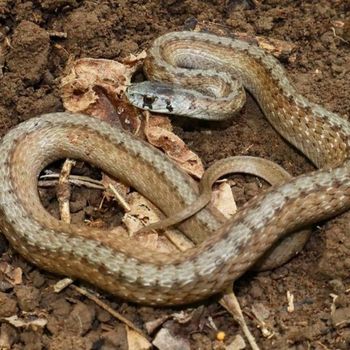 |
| 5 | Eastern Garter Snake (Thamnophis sirtalis sirtalis) |
| 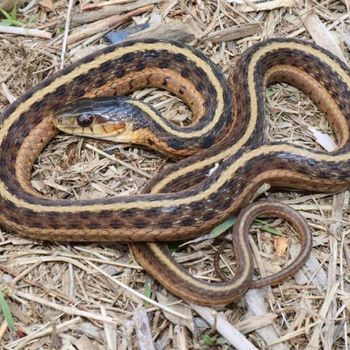 |
| 6 | Eastern Hog-nosed Snake (Heterodon platirhinos) |
| 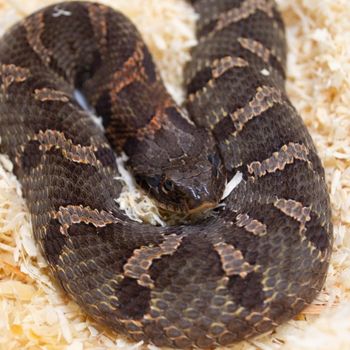 |
| 7 | Eastern Milksnake (Lampropeltis triangulum) |
|  |
| 8 | Eastern Ribbon Snake (Thamnophis sauritus sauritus) |
|  |
| 9 | Eastern Worm Snake (Carphophis amoenus amoenus) |
| 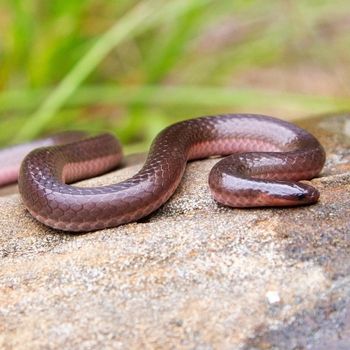 |
| 10 | Northern Red-bellied Snake (Storeria occipitomaculata occipitomaculata) |
|  |
| 11 | Northern Water Snake (Nerodia sipedon) |
|  |
| 12 | Ringneck Snake (Diadophis punctatus) |
|  |
| 13 | Smooth Green Snake (Opheodrys vernalis) |
| 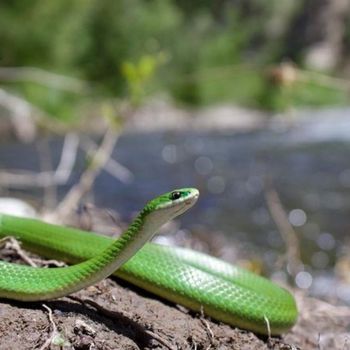 |
| 14 | Timber Rattlesnake (Crotalus horridus) |
|  |
14 Snakes You Can Find in Massachusetts
In the state of Massachusetts, a fascinating array of serpents can be found slithering through its diverse landscapes. From venomous to harmless, each species has its unique story to tell. Below, we’ll explore the wonders of these often misunderstood creatures of Massachusetts, from their natural habitats and behaviors to the challenges they face in our changing world. Some of the most common serpents found in Massachusetts include the garter snake, milk snake, and the Eastern rat snake. Despite being non-venomous, these snakes play a vital role in controlling the rodent population and maintaining the ecological balance of their habitats. However, like Florida’s venomous snakes, they also face threats from habitat loss, pollution, and human persecution. Understanding and respecting these creatures is crucial for their survival and the well-being of the ecosystems they inhabit.
1. Black Racer
- Scientific Name: Coluber constrictor constrictor
- Common Name: Black racer
- Size: Up to 6 feet (1.8 meters)
- Natural Habitat: Various habitats, including forests, grasslands, and urban areas
- Color: Solid black with white chin
- Habitat: Various habitats, including forests, grasslands, and urban areas
- Maximum Size: Up to 6 feet (1.8 meters)
- Diet: Rodents, lizards, frogs, and insects
- Reproduction: Lay eggs in clutches of 12-30
- Venom: Non-venomous
- Conservation: Least concern
The Black Racer (Coluber constrictor constrictor) is a non-venomous snake species of Massachusetts reaching up to 6 feet (1.8 meters) in length, featuring a solid black coloration and a striking white chin. It thrives in an array of habitats, including forests, grasslands, and urban areas. As a diurnal and swift-moving snake, it feeds on rodents, lizards, frogs, and insects. They reproduce by laying eggs in clutches of 12-30, and are currently designated as a species of least concern in terms of conservation status.
2. Black Rat Snake
- Scientific Name: Pantherophis obsoletus
- Common Name: Black rat snake
- Size: Up to 8 feet (2.4 meters)
- Natural Habitat: Forests, grasslands, and urban areas
- Color: Black with faint dark blotches
- Habitat: Forests, grasslands, and urban areas
- Maximum Size: Up to 8 feet (2.4 meters)
- Diet: Rodents, birds, and eggs
- Reproduction: Lay eggs in clutches of 5-30
- Venom: Non-venomous
- Conservation: Least concern
Pantherophis obsoletus, commonly known as Black Rat Snake, can grow up to 8 feet (2.4 meters) long, with a black and dark-blotched coloring. These non-venomous reptiles inhabit forests, grasslands, and urban areas of Massachusetts, showcasing diurnal and semi-arboreal behavior. Their diet consists of rodents, birds, and eggs. Female Black Rat Snakes lay eggs in clutches of 5-30 during the reproduction season. Although not endangered, these snakes play an important role in controlling rodent populations.
3. Copperhead
- Scientific Name: Agkistrodon contortrix
- Common Name: Copperhead
- Size: Up to 3 feet (0.9 meters)
- Natural Habitat: Forests, swamps, rocky terrain, and riverside habitats
- Color: Coppery-brown with reddish-brown or dark hourglass-shaped bands
- Habitat: Forests, swamps, rocky terrain, and riverside habitats
- Maximum Size: Up to 3 feet (0.9 meters)
- Diet: Rodents, birds, frogs, and insects
- Reproduction: Give live birth to 2-18 young in late summer or early fall
- Venom: Venomous, but relatively mild compared to other venomous snakes
- Conservation: Least concern
The Copperhead (Agkistrodon contortrix) is a venomous snake up to 3 feet (0.9 meters) long, known for its coppery-brown coloring with reddish-brown or dark hourglass-shaped bands. Inhabiting forests, swamps, rocky terrain, and riverside habitats, these solitary and primarily nocturnal creatures prey on rodents, birds, frogs, and insects. Copperheads give live birth to 2-18 young in late summer or early fall. Though venomous, their venom is relatively mild compared to other venomous snakes. Their conservation status is of least concern.
4. Dekay’s Brownsnake
- Scientific Name: Storeria dekayi
- Common Name: Dekay’s brown snake
- Size: 9-15 inches (23-38 cm)
- Natural Habitat: Forests, grasslands, wetlands, and urban areas
- Color: Brown or gray with dark spots
- Habitat: Forests, grasslands, wetlands, and urban areas
- Maximum Size: 9-15 inches (23-38 cm)
- Diet: Earthworms, slugs, and other soft-bodied invertebrates
- Reproduction: Give birth to live young (ovoviviparous), 3-40 offspring
- Venom: Non-venomous
- Conservation: Least concern
Storeria dekayi, commonly known as Dekay’s Brown Snake, is a small, non-venomous reptile, measuring 9-15 inches (23-38 cm) in length. Its brown or gray body features dark spots, and it inhabits forests, grasslands, wetlands, and urban areas. Exhibiting terrestrial, nocturnal, and secretive behavior, its diet consists primarily of earthworms, slugs, and other soft-bodied invertebrates. A fascinating ovoviviparous species, Dekayís Brown Snake gives birth to live young, bearing 3-40 offspring. Its current conservation status is classified as least concern.
5. Eastern Garter Snake
- Scientific Name: Thamnophis sirtalis sirtalis
- Common Name: Eastern garter snake
- Size: Up to 2-4.5 feet (0.6-1.4 meters)
- Natural Habitat: Forests, grasslands, wetlands, and urban areas
- Color: Brown, green or gray with three yellow stripes
- Habitat: Forests, grasslands, wetlands, and urban areas
- Maximum Size: Up to 2-4.5 feet (0.6-1.4 meters)
- Diet: Earthworms, amphibians, fish, and small mammals
- Reproduction: Lay eggs in clutches of 10-40
- Venom: Mildly venomous but harmless to humans
- Conservation: Least concern
The Eastern Garter Snake (Thamnophis sirtalis sirtalis) is a commonly found snake species that can grow up to 2-4.5 feet (0.6-1.4 meters) in length. It displays a brown, green, or gray coloration adorned with three yellow stripes. Inhabitants of forests, grasslands, wetlands and urban areas, these diurnal and terrestrial reptiles primarily feed on earthworms, amphibians, fish, and small mammals. Eastern Garter Snakes reproduce by laying 10-40 eggs per clutch, and although they are mildly venomous, their venom poses little risk to humans. They are currently classified under the least concern category in conservation status.
6. Eastern Hog-nosed Snake
- Scientific Name: Heterodon platirhinos
- Common Name: Eastern hog-nosed snake
- Size: 20-33 inches (51-84 cm)
- Natural Habitat: Woodlands, grasslands, and sandy areas
- Color: Highly variable, typically brown or gray with dark blotches
- Habitat: Woodlands, grasslands, and sandy areas
- Maximum Size: 20-33 inches (51-84 cm)
- Diet: Mostly toads, but also other amphibians and small mammals
- Reproduction: Lay eggs, 4-60 per clutch
- Venom: Mild venom, harmless to humans
- Conservation: Least concern
The Eastern Hog-nosed Snake (Heterodon platirhinos) is a moderately-sized serpent, reaching lengths of 20-33 inches (51-84 cm). Its coloration is highly variable, typically exhibiting brown or gray hues with dark blotches. Inhabiting woodlands, grasslands, and sandy areas, this diurnal snake is known for playing dead when threatened. Its diet mainly consists of toads, along with other amphibians and small mammals. It reproduces by laying 4-60 eggs per clutch, has mild venom harmless to humans, and is classified as of “Least Concern” in conservation efforts.
7. Eastern Milksnake
- Scientific Name: Lampropeltis triangulum
- Common Name: Eastern milksnake
- Size: Up to 3.9 feet (1.2 meters)
- Natural Habitat: Forests, grasslands, farmlands, and rocky areas
- Color: Reddish-brown with y-shaped black-edged white bands
- Habitat: Forests, grasslands, farmlands, and rocky areas
- Maximum Size: Up to 3.9 feet (1.2 meters)
- Diet: Rodents, small birds, and reptiles
- Reproduction: Lay eggs in clutches of 3-20
- Venom: Non-venomous
- Conservation: Least concern
The Eastern Milksnake (Lampropeltis triangulum) is a non-venomous snake that grows up to 3.9 feet (1.2 meters) in length. It features a reddish-brown color adorned with Y-shaped black-edged white bands. Commonly found in forests, grasslands, farmlands, and rocky areas of Massachusetts, this nocturnal and terrestrial snake primarily consumes rodents, small birds, and reptiles. Eastern Milksnakes reproduce by laying egg clutches of 3-20. Currently, their conservation status is listed as least concern.
8. Eastern Ribbon Snake
- Scientific Name: Thamnophis sauritus sauritus
- Common Name: Eastern ribbon snake
- Size: 18-34 inches (45-86 cm)
- Natural Habitat: Wetlands, swamps, and marshes near water
- Color: Black, greenish, or brown with three distinct light stripes
- Habitat: Wetlands, swamps, and marshes near water
- Maximum Size: 18-34 inches (45-86 cm)
- Diet: Frogs, toads, small fish, and insects
- Reproduction: Lay 3-27 eggs, sometimes communal with other snakes
- Venom: Non-venomous
- Conservation: Least concern
The Eastern Ribbon Snake, scientifically known as Thamnophis sauritus sauritus, is a non-venomous reptile measuring 18-34 inches (45-86 cm). It inhabits wetlands, swamps, and marshes near water and features a distinctive black, greenish, or brown color with three light stripes. Known for their daytime activity and skittish behavior, these snakes are excellent swimmers with a diet comprising frogs, toads, small fish, and insects. They reproduce by laying 3-27 eggs, sometimes communally with other snakes. Their conservation status is of least concern.
9. Eastern Worm Snake
- Scientific Name: Carphophis amoenus amoenus
- Common Name: Eastern worm snake
- Size: Up to 11-14 inches (28-35.5 centimeters)
- Natural Habitat: Forests, woodlands, and grasslands with moist soil
- Color: Pink-brown to gray-brown with a pinkish-yellow belly
- Habitat: Forests, woodlands, and grasslands with moist soil
- Maximum Size: Up to 11-14 inches (28-35.5 centimeters)
- Diet: Earthworms and other soft-bodied invertebrates
- Reproduction: Lay eggs in clutches of 2-8
- Venom: Non-venomous
- Conservation: Least concern
The Eastern Worm Snake (Carphophis amoenus amoenus) is a small, non-venomous species, reaching lengths of 11-14 inches (28-35.5 centimeters). It possesses a pink-brown to gray-brown coloration with a distinctive pinkish-yellow belly. This elusive, nocturnal burrower inhabits forests, woodlands, and grasslands with moist soil. Its diet primarily consists of earthworms and other soft-bodied invertebrates. The Eastern Worm Snake lays egg clutches of 2-8 eggs, and its conservation status is currently listed as “Least Concern.”
10. Northern Red-bellied Snake
- Scientific Name: Storeria occipitomaculata occipitomaculata
- Common Name: Northern red-bellied snake
- Size: Up to 16 inches (40 centimeters)
- Natural Habitat: Deciduous forests, meadows, and wetlands
- Color: Gray or brown with a red or orange underside
- Habitat: Deciduous forests, meadows, and wetlands
- Maximum Size: Up to 16 inches (40 centimeters)
- Diet: Slugs, snails, and earthworms
- Reproduction: Live-bearing, producing 5-20 offspring
- Venom: Non-venomous
- Conservation: Least concern
The Northern Red-bellied Snake (Storeria occipitomaculata occipitomaculata) is a small, non-venomous reptile native to the United States. Measuring up to 16 inches (40 centimeters) in length, this species is characterized by its gray or brown coloration with a distinctive red or orange underside. Inhabiting deciduous forests, meadows, and wetlands, the nocturnal, terrestrial creature feeds primarily on slugs, snails, and earthworms. It is live-bearing, giving birth to 5-20 offspring at a time. Currently, the Northern Red-bellied Snake is considered to be of least concern for conservation efforts.
11. Northern Water Snake
- Scientific Name: Nerodia sipedon
- Common Name: Northern water snake
- Size: Up to 4.5 feet (1.4 meters)
- Natural Habitat: Aquatic habitats, such as rivers, lakes, ponds, and marshes
- Color: Brown or gray with dark bands or blotches
- Habitat: Aquatic habitats, such as rivers, lakes, ponds, and marshes
- Maximum Size: Up to 4.5 feet (1.4 meters)
- Diet: Fish, amphibians, and invertebrates
- Reproduction: Lay eggs in clutches of 10-30
- Venom: Non-venomous
- Conservation: Least concern
The Northern Water Snake (Nerodia sipedon) is a non-venomous reptile that can grow up to 4.5 feet (1.4 meters) in length. It is characterized by its brown or gray color with dark bands or blotches. This nocturnal and semi-aquatic species can be found in a variety of aquatic habitats, including rivers, lakes, ponds, and marshes. Its diet consists of fish, amphibians, and invertebrates. Northern Water Snakes reproduce by laying eggs in clutches of 10-30, and currently have a conservation status of least concern.
12. Ringneck Snake
- Scientific Name: Diadophis punctatus
- Common Name: Ringneck snake
- Size: 12-15 inches (30-38 centimeters)
- Natural Habitat: Forests, grasslands, and urban areas
- Color: Gray or dark brown with yellow or orange ring around the neck
- Habitat: Forests, grasslands, and urban areas
- Maximum Size: 12-15 inches (30-38 centimeters)
- Diet: Small invertebrates such as insects, worms, and slugs
- Reproduction: Lay eggs in clutches of 3-10
- Venom: Mildly venomous, but not harmful to humans
- Conservation: Least concern
The Ringneck Snake (Diadophis punctatus) is a small, mildly venomous serpent, measuring 12-15 inches (30-38 centimeters) in length. Exhibiting a gray or dark brown coloration with a distinct yellow or orange ring around its neck, this species prefers habitats including forests, grasslands, and urban areas. As nocturnal, secretive creatures, Ringneck Snakes are found hiding under rocks or logs, feeding on small invertebrates such as insects, worms, and slugs. Reproducing by laying 3-10 eggs per clutch, this snake is presently classified as least concern in terms of conservation status.
13. Smooth Green Snake
- Scientific Name: Opheodrys vernalis
- Common Name: Smooth green snake
- Size: 14-20 inches (36-51 cm)
- Natural Habitat: Grasslands, meadows, and open woodlands
- Color: Bright green with a lighter belly
- Habitat: Grasslands, meadows, and open woodlands
- Maximum Size: 14-20 inches (36-51 cm)
- Diet: Insects and spiders
- Reproduction: Lay eggs in clutches of 3-12
- Venom: Non-venomous
- Conservation: Least concern
The Smooth Green Snake (Opheodrys vernalis) measures 14-20 inches (36-51 cm) and is characterized by its vibrant green color and lighter belly. Commonly found in grasslands, meadows, and open woodlands, this diurnal and terrestrial reptile is an adept climber. Its diet mainly consists of insects and spiders. In terms of reproduction, they lay eggs in clutches of 3-12. Though non-venomous, these snakes should be admired from afar. Fortunately, their conservation status is currently listed as ‘Least Concern.’
14. Timber Rattlesnake
- Scientific Name: Crotalus horridus
- Common Name: Timber rattlesnake
- Size: Up to 6 feet (1.8 meters)
- Natural Habitat: Forests, mixed woodlands, and rocky hillsides
- Color: Yellow, brown, gray, or black with dark bands
- Habitat: Forests, mixed woodlands, and rocky hillsides
- Maximum Size: Up to 6 feet (1.8 meters)
- Diet: Rodents, birds, and small mammals
- Reproduction: Viviparous, giving birth to 4-14 live young
- Venom: Hemotoxic venom
- Conservation: Least concern
The Timber Rattlesnake, scientifically known as Crotalus horridus, is a solitary, ambush predator that can grow up to 6 feet (1.8 meters) in length. It comes in various colors, including yellow, brown, gray, or black with dark bands, and inhabits forests, mixed woodlands, and rocky hillsides. Its diet consists of rodents, birds, and small mammals. Unlike most snakes, the Timber Rattlesnake is viviparous, giving birth to 4-14 live young. It possesses hemotoxic venom, and its conservation status is currently listed as least concern.
Nearby States:
Final Words
All the 14 snakes have truly opened our eyes to the fascinating world of snakes found in Massachusetts. Who knew there were so many different types of these slithering reptiles, each with their own unique characteristics and habitats?
Not only did we get a chance to learn about some of the more common and well-known species, but we also delved into the lesser-known and often misunderstood ones.
So, the next time you’re out and about in Massachusetts, keep an eye out for these incredible creatures, and let’s continue to appreciate and protect the diverse wildlife that makes our world so interesting!
Are the Types of Snakes Found in Massachusetts Also Common Throughout the USA?
Massachusetts is home to several species of snakes, but only some of them are found broadly across the country. For example, garter snakes and northern water snakes are common snakes in the united states, while others, like the timber rattlesnake, are more region-specific. The distribution varies by habitat and climate.
Are the Snakes in Rhode Island Similar to the Snakes in Massachusetts?
Yes, snakes in rhode island are similar to the snakes in Massachusetts. Both states are in the same region and have similar habitats, which allows for the presence of similar species of snakes. However, individual characteristics and behavior may vary slightly.


